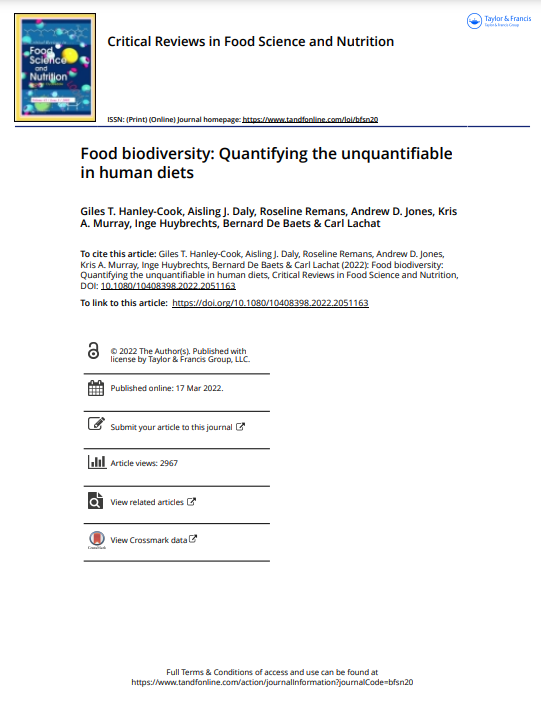Dietary diversity is an established public health principle, and its measurement is essential for studies of diet quality and food security. However, conventional between food group scores fail to capture the nutritional variability and ecosystem services delivered by dietary richness and dissimilarity within food groups, or the relative distribution (i.e., evenness or moderation) of e.g., species or varieties across whole diets.
Summarizing food biodiversity in an all-encompassing index is problematic. Therefore, various diversity indices have been proposed in ecology, yet these require methodological adaption for integration in dietary assessments. In this narrative review, we summarize the key conceptual issues underlying the measurement of food biodiversity at an edible species level, assess the ecological diversity indices previously applied to food consumption and food supply data, discuss their relative suitability, and potential amendments for use in (quantitative) dietary intake studies. Ecological diversity indices are often used without justification through the lens of nutrition.
To illustrate: (i) dietary species richness fails to account for the distribution of foods across the diet or their functional traits; (ii) evenness indices, such as the Gini-Simpson index, require widely accepted relative abundance units (e.g., kcal, g, cups) and evidence-based moderation weighting factors; and (iii) functional dissimilarity indices are constructed based on an arbitrary selection of distance measures, cutoff criteria, and number of phylogenetic, nutritional, and morphological traits. Disregard for these limitations can lead to counterintuitive results and ambiguous or incorrect conclusions about the food biodiversity within diets or food systems. To ensure comparability and robustness of future research, we advocate food biodiversity indices that: (i) satisfy key axioms; (ii) can be extended to account for disparity between edible species; and (iii) are used in combination, rather than in isolation.
Hanley-Cook, G.T.; Daly, A.J.; Remans, R.; Jones, A.D.; Murray, K.A.; Huybrechts, I.; De Baets, B.; Lachat, C.

